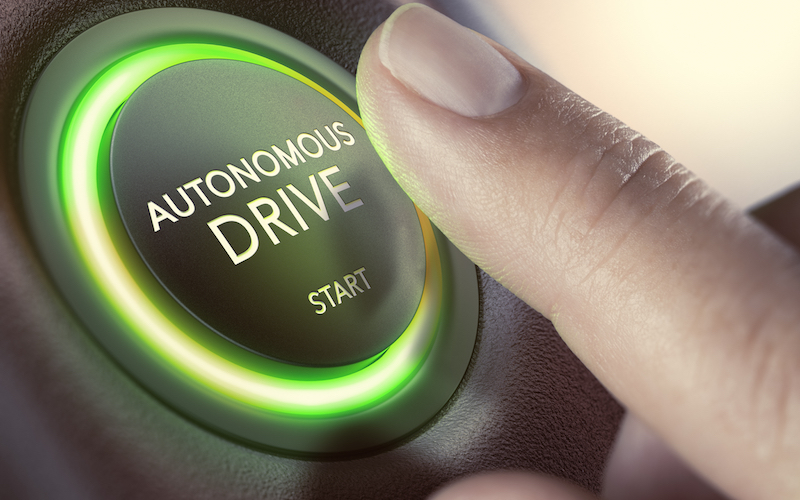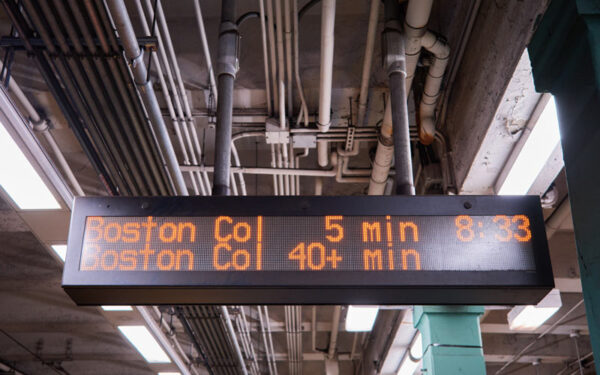
Photo Credit: OliverLeMoal. Shutterstock.
There’s a consensus that self-driving cars are on the cusp of bringing about a transportation revolution that will address many environmental and societal challenges. However, it relies on a few critical assumptions about our future that are not guaranteed.
The self-driving car industry paints a picture of blissful commutes, less pollution, and fewer accidents. But unless the industry is pushed to implement good policies, these are just fanciful dreams. Right now, federal policy makers are tearing down oversight of the self-driving car industry and moving to interfere with states’ abilities to reduce congestion, improve air quality, and keep our roads safe. Meanwhile, some state lawmakers think we should wait to introduce new policies, because self-driving cars are still far away.
But the reality is, self-driving cars will be here much sooner than we think, and states must implement strong state policy now to fulfill the vision of a positive future promised by this emerging industry.
We Can’t Wait for Good Policy
Eleven automobile makers have committed to putting driverless technology on the road within three years, and others have promised to be right behind them. Even if it takes automakers a little longer, it takes time to develop and implement good policy. We cannot wait.
We also cannot assume that self-driving cars will automatically be clean, zero-emission vehicles. While some will be electric from the start, like Teslas, electric car batteries currently don’t generate enough power to run the self-driving software and hardware that these cars require. Industry leaders such as Ford, Waymo, Volvo, and Uber are all opting for gasoline-hybrid systems. This choice fails to optimize the potential environmental benefits of self-driving cars.
That means that self-driving cars could pollute our air and climate as much as the cars we drive now. Our climate and health can’t afford that.
Self-Driving Cars Mean More Traffic on the Road
Likewise, growing evidence suggests that traffic congestion will actually go up with self-driving cars. Reasons for this include new access to cars for non-drivers, people’s willingness to travel longer distances if they don’t have to drive themselves, folks who then choose self-driving cars over public transportation, and the cars that will inevitably drive around without passengers (known as zero-occupancy, or “zombie,” vehicles).
Although most early adopters will be ride-sharing companies like Uber and Lyft, congestion is still likely to go up. These companies make money by having rides immediately available, which means cars aren’t parked in remote locations or in parking structures, but rather circle the block like taxies. Uber and Lyft actually increase congestion in New York City, and work being done at U.C. Davis shows that these ride-sharing companies not only add car trips, but cannibalize mass transit systems.
With more congestion will come even more pollution from these gas-powered self-driving cars – not to mention more headaches for commuters. That’s not a future that any of us want to see.
Strong Policies Are Crucial for Public Safety
Unfortunately, federal lawmakers are trying to give this new industry free rein on all issues of safety and performance, while actively limiting states’ ability to protect their citizens. The most recent U.S. Department of Transportation’s Automated Vehicle Policy, ironically called A Vision for Safety, lays out a voluntary guidance framework for automotive companies. In it, vehicle safety is left to self-assessment, and the company determines if it wants to share that information with the public.
Carmakers have a long history of putting profits before people, let alone the environment, so why are we expecting them to change now? Just in the last five years we’ve seen the Volkswagen emissions fraud, Takata’s automotive airbag failure, and General Motors’ ignition switch recall.
While the Department of Transportation’s policy offers 12 priority safety elements, it emphasizes that the guidance is entirely voluntary – compliance is not required.
In other words, we’re trusting the car companies to keep us safe in this new technology – if they feel like it. While individual states may not be so happy to trust the industry given its track record, the Department of Transportation specifically tells states not to intervene on safety issues.
We Can’t Let Congress Run Us Over
Meanwhile, Congress is moving forward with legislation that may leave critical regulatory issues unresolved – issues that will harm those of us living in New England. The House has passed the SELF DRIVE Act, and the Senate will soon vote on the American Vision for Safer Transportation Through Advancement of Revolutionary Technologies (AV START) Act. Common features of the bills will allow hundreds of thousands of self-driving cars on the roads while exempting them from certain safety standards.
In addition, The SELF DRIVE Act actually limits states’ efforts to keep their citizens safe by preempting laws that place an “unreasonable restriction” on the performance of these vehicles. “Performance” is not defined, and could easily be interpreted to restrict states from enforcing laws that could impede performance, including traffic laws, fees for miles traveled, or fees for traveling without passengers. If states cannot use innovative tools to enhance the benefits of self-driving cars, then we lose our ability to improve congestion and reduce harmful greenhouse emissions.
In addition, this legislation does not ensure state access to critical data on where and how self-driving cars and trucks are operating. This failure will further prevent states from developing coherent transportation policies that cut congestion and pollution.
It’s Time to Move Forward, Not Roll Back
As we approach this transportation revolution, our federal policy makers are proactively dismantling important safety checks on self-driving car manufacturers. Congress seems content to rely on carmaker’s claims that automated driving systems will be safer and cause less pollution, even if there is no oversight. However, it’s clear that significant negative consequences may result if we don’t develop effective policies.
The good news is that states still can implement policies to counter these trends. But change is fast approaching, and states need to act now to ensure a better future.



